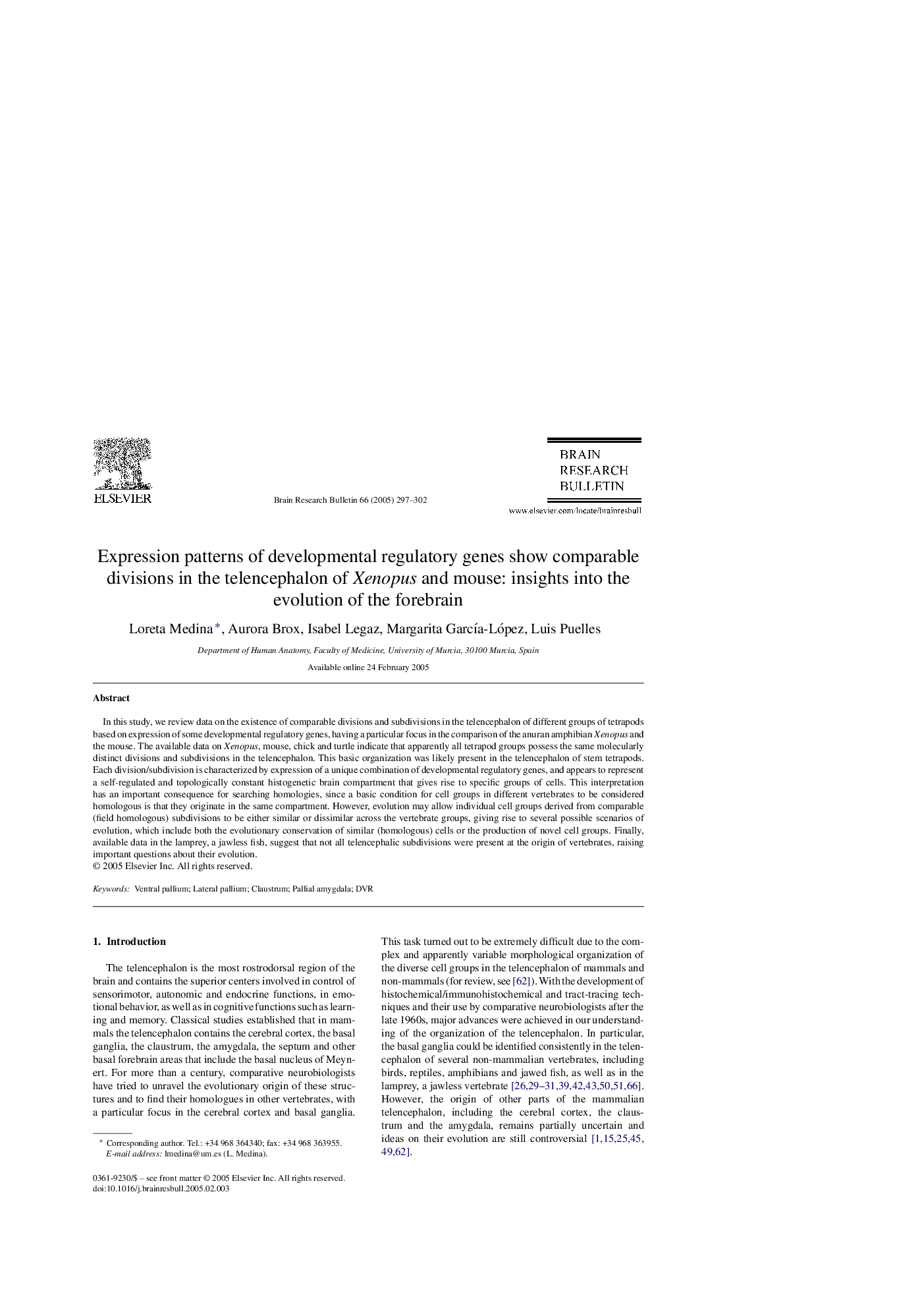| Article ID | Journal | Published Year | Pages | File Type |
|---|---|---|---|---|
| 9409417 | Brain Research Bulletin | 2005 | 6 Pages |
Abstract
In this study, we review data on the existence of comparable divisions and subdivisions in the telencephalon of different groups of tetrapods based on expression of some developmental regulatory genes, having a particular focus in the comparison of the anuran amphibian Xenopus and the mouse. The available data on Xenopus, mouse, chick and turtle indicate that apparently all tetrapod groups possess the same molecularly distinct divisions and subdivisions in the telencephalon. This basic organization was likely present in the telencephalon of stem tetrapods. Each division/subdivision is characterized by expression of a unique combination of developmental regulatory genes, and appears to represent a self-regulated and topologically constant histogenetic brain compartment that gives rise to specific groups of cells. This interpretation has an important consequence for searching homologies, since a basic condition for cell groups in different vertebrates to be considered homologous is that they originate in the same compartment. However, evolution may allow individual cell groups derived from comparable (field homologous) subdivisions to be either similar or dissimilar across the vertebrate groups, giving rise to several possible scenarios of evolution, which include both the evolutionary conservation of similar (homologous) cells or the production of novel cell groups. Finally, available data in the lamprey, a jawless fish, suggest that not all telencephalic subdivisions were present at the origin of vertebrates, raising important questions about their evolution.
Related Topics
Life Sciences
Neuroscience
Cellular and Molecular Neuroscience
Authors
Loreta Medina, Aurora Brox, Isabel Legaz, Margarita GarcÃa-López, Luis Puelles,
